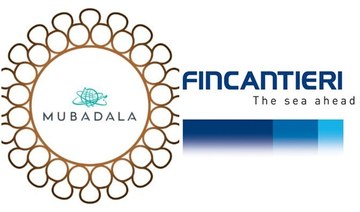LONDON: The decline in construction costs in Saudi Arabia is set to ease, but “tough” market conditions will prevail in the industry, real estate firm Colliers International forecasts.
Construction costs have plummeted since the oil-price crash began in 2014, which led to a massive scaling back of building works, the cancelation of many projects, and contractors slashing profit margins.
But the rate of the decline in costs is forecast to ease next year and possibly reverse in 2018, said Bob Flanagan, managing director of project management and cost consultancy in the Middle East at Colliers International.
Average construction costs in Saudi Arabia declined by 3.1 percent in 2015, 11.5 percent in 2016, and are set to fall by a further 3.9 percent next year, Colliers forecasts.
Constructing an upmarket high-rise office building currently costs between SR4,207 and SAR5,124 per square meter, Colliers data show. But that is set to decrease to between SR4,072 and SR4,960 by late 2017, it said.
The decline in construction costs is “not a great trend for the industry as a whole”, Flanagan said. But the rate of decline is slowing, he pointed out.
“The rate of drop in construction costs will start to slow, if not reverse, into 2018,” Flanagan told Arab News.
A key factor behind declining construction costs has been the lower profit margins charged by building contractors, Flanagan said.
Before the oil price crash, contractors typically made a profit of between 10 and 20 percent on a job. Now, construction contracts typically attract a lower profit margin, or even a small loss, he added.
But there is a limit as to how long this can be sustained, Flanagan said.
“There’s only so long that they can price projects at low cost and at low margins. So at some stage… prices have to stabilize in order for the industry to survive.” Colliers data show that construction material costs have also been on the decline, with prices for reinforcing steel, which is known as rebar, down 13 percent and concrete down by 3 percent this year.
But trends in material prices will also reverse, softening the decline in overall construction costs, Flanagan said.
“Global construction commodity materials, such as aluminum, steel, and these type of materials, will start to slowly creep up from 2017 onward,” he said.
Other factors influencing the forecast slowdown or reverse in construction cost declines include Saudi Arabia’s plan to introduce a value-added tax in 2018, and expected higher inflation rates, Flanagan added.
Yet easing price drops do not suggest a recovery in the troubled Saudi construction market.
According to a report by The National Commercial Bank, there was a “sharp drop” in construction awards in the first half of this year. Approximately SR48.2 billion worth of construction contracts was awarded in the first half of 2016 — less than half the SR116.9 billion awarded during the same period in 2015, the bank said.
“When oil prices dropped it had a knock-on effect on construction, and it appears it also had a knock-on effect on a number of projects in the market, and confidence in the market,” Flanagan said.
The forecast trend in construction costs does not indicate that the woes of the Saudi construction industry are over, the consultant said.
“It’s definitely not a recovery in the construction industry,” he said.
But there are some positive signs on the horizon, such as the implementation of more public-private partnerships in the local market, he added.
“Procurement strategies will need to change — so the introduction of more public-private partnerships, PPPs. But it probably needs some support, and some framework policies, to be imposed by the government in order to make them more mainstream,” Flanagan said.
“It’s not all negative, but it is going to be tough in the short term.”
Fall in Saudi construction costs to ease, but ‘tough’ market persists
Fall in Saudi construction costs to ease, but ‘tough’ market persists
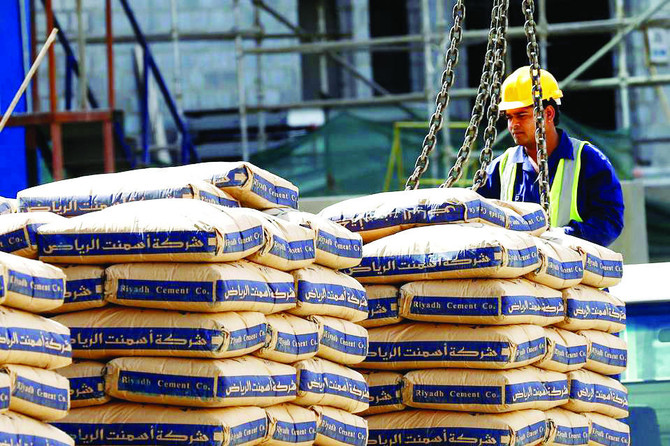
Italy’s Fincantieri launches Saudi shipbuilding unit to strengthen collaboration
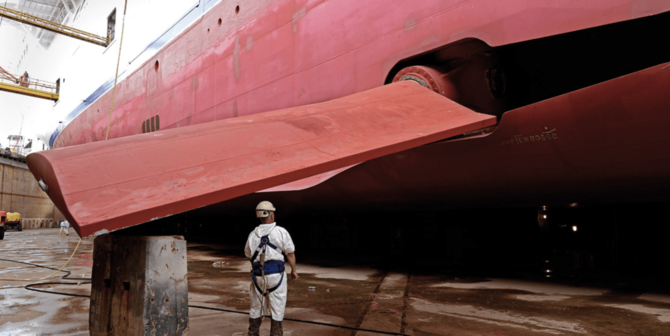
RIYADH: Italian shipbuilder Fincantieri plans to enhance collaboration with Saudi Arabia through a newly established unit, the company said.
Fincantieri Arabia will bolster the Kingdom’s Vision 2030 development agenda in the cruise, defense, and offshore sectors, the group disclosed in a press release, issued on the sidelines of an industrial conference in Riyadh.
Fincantieri is the only shipbuilding group active in all high-tech marine industry sectors, the release added.
The new unit aims to highlight the group’s wide-ranging capabilities in shipbuilding, maritime equipment and systems, and naval logistic support services, including training and simulation.
It will also manage stakeholder relationships in the Kingdom and seek out local partners.
Moreover, Fincantieri said it plans to share its technological expertise in shipbuilding across cruise, defense, and offshore sectors, thus opening up opportunities for Saudi nationals.
The firm’s CEO Pierroberto Folgiero: “Our commitment to the Kingdom of Saudi Arabia is steadfast. Fincantieri stands out in the shipbuilding industry for its vertically integrated model and our leadership across naval, cruise, and oil and gas sectors. We are proud to offer these world-class capabilities built on decades of naval heritage and excellence to help the Kingdom achieve its Vision 2030 objectives.”
He added: “Given the maritime industry’s pivotal role under Vision 2030, we eagerly anticipate establishing strategic partnerships. Through these collaborations, we aim to enhance local technological capabilities, create opportunities for Saudi talent, and foster knowledge exchange.”
The state-controlled Fincantieri has expanded its presence in the Middle East in recent years. In March 2023, Folgiero stated that the group would venture into the Saudi market and was strategically positioned for growth in the region.
The Italian group is also aiming to enhance its focus on defense, a sector that presently contributes to around a quarter of its revenues.
On May 20, Fincantieri concluded a shipbuilding joint venture, named Maestral, with Abu Dhabi-based EDGE Group. The two entities announced the signing of a €400 million ($433 million) contract with the UAE’s Coast Guard Forces for the supply of 10 advanced 51-meter offshore patrol vessels.
Lebanon’s reforms insufficient for recovery, IMF says
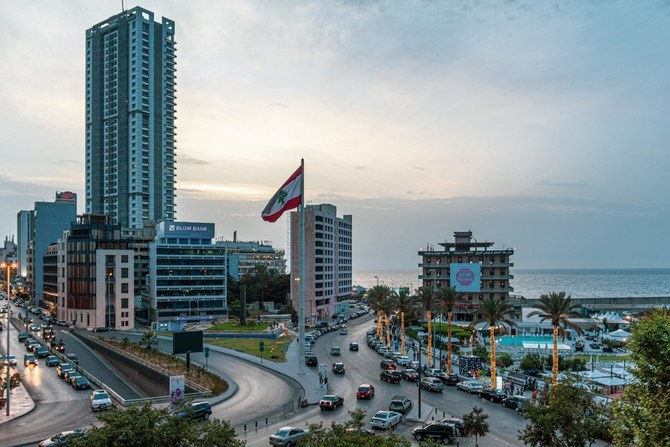
Lebanon’s economic reforms are insufficient to help lift the country out of its economic crisis, the International Monetary Fund said on Thursday.
Ernesto Ramirez Rigo, the head of the IMF mission visiting Lebanon, said in a statement that Lebanon’s ongoing refugee crisis, fighting with Israel at its Southern border and the spillover from the war in Gaza are exacerbating an already dire economic situation.
Israeli forces and Lebanon’s Hezbollah have traded fire across Lebanon’s southern border since the war in Gaza broke out in October last year.
Israel launched its assault on Gaza following a Hamas-led attack on southern Israeli communities on Oct. 7 in which fighters killed 1,200 people and captured more than 250 hostages.
Since then, Israel’s assault has killed more than 35,000 people, with thousands more feared buried under the rubble, according to Gaza health authorities.
The conflict “has internally displaced a significant number of people and caused damage to infrastructure, agriculture, and trade in southern Lebanon. Together with a decline in tourism, the high risks associated with the conflict create significant uncertainty to the economic outlook,” Rigo said.
Fiscal and monetary reforms carried out by Lebanon’s finance ministry and the central bank, including steps to unify multiple exchange rates for the Lebanese pound and contain a currency slump, have helped reduce inflationary pressure, according to Rigo.
However, he said more needs to be done if Lebanon is to alleviate its financial crisis.
“These policy measures fall short of what is needed to enable a recovery from the crisis. Bank deposits remain frozen, and the banking sector is unable to provide credit to the economy, as the government and parliament have been unable to find a solution to the banking crisis,” he added.
“Addressing the banks’ losses while protecting depositors to the maximum extent possible and limiting recourse to scarce public resources in a credible and financially viable manner is indispensable to lay the foundation for economic recovery.”
Since Lebanon’s economy began to unravel in 2019, its currency has lost around 95 percent of its value, banks have locked most depositors out of their savings and more than 80 percent of the population has sunk below the poverty line.
The crisis erupted after decades of profligate spending and corruption among the ruling elite, some of whom led banks that lent heavily to the state.
The government estimates losses in the financial system total more than $70 billion, the majority of which were accrued at the central bank.
Oil Updates – prices fall for fourth straight day as US rate hike prospects emerge
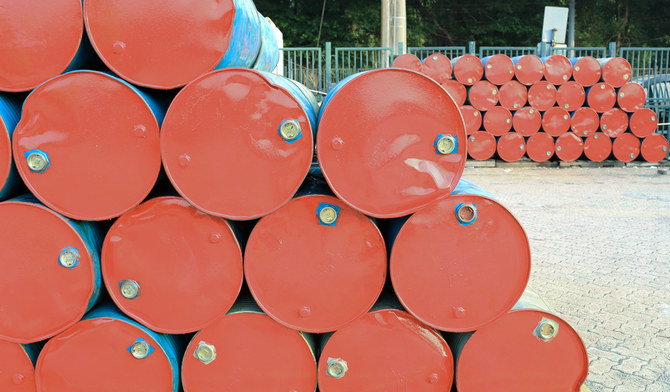
LONDON: Oil prices eased for a fourth straight session on Thursday after the minutes of a US Federal Reserve meeting revealed discussions of a further tightening of interest rates if inflation remained sticky, a move that could hurt oil demand, according to Reuters.
Brent crude futures fell 20 cents, or 0.2 percent, to $81.70 a barrel at 9:51 a.m. Saudi time. US West Texas Intermediate crude futures were down 29 cents, or 0.4 percent, at $77.28. Both benchmarks fell more than 1 percent on Wednesday.
Minutes released on Wednesday from the Federal Reserve’s last policy meeting showed the US central bank’s response to sticky inflation would “involve maintaining” its policy rate for now but also reflected discussion of possible further hikes.
“Various participants mentioned a willingness to tighten policy further should risks to inflation materialize in a way that such an action became appropriate,” minutes of the Fed’s meeting said.
Higher interest rates boost borrowing costs, crunching funds that could boost economic growth and oil demand in the world’s largest oil consuming nation.
Also weighing on the market, US crude stocks rose by 1.8 million barrels last week, according to the Energy Information Administration, compared with an estimate for a 2.5 million-barrel draw.
Globally, physical crude markets have more recently been pressured by soft refinery demand and ample supply.
“Recent market softness has come on the back of weaker data, including rising oil inventories, tepid demand, and refinery margin weakness and the increasing risk of run cuts,” Citi analysts said in a note on Thursday.
Russia said it exceeded its OPEC+ production quota in April for “technical reasons” and will soon present to the Organization of the Petroleum Exporting Countries Secretariat its plan to compensate for the error, the Russian Energy Ministry said late on Wednesday.
Citi said it still expects that OPEC+, which groups together OPEC and allies led by Russia, will hold its production cuts through the third quarter of this year when it meets on June 1.
Citi also said it continues to see Brent averaging $86 a barrel in the second quarter of 2024.
Saudi EXIM Bank signs 2 agreements with Japan’s SMBC and MUFG banks

TOKYO: On the sidelines of the Saudi-Japan Vision 2030 Business Forum in Tokyo, Saudi EXIM Bank signed two cooperation agreements with SMBC Business Banking and MUFG Bank.
The agreements aimed to foster cooperation and create co-financing opportunities to promote non-oil exports in target markets, according to the Saudi EXIM Bank.
The two agreements were signed separately by Saad bin Abdulaziz Al-Khalab, CEO of Saudi EXIM Bank, along with Akihiro Fukudom, CEO of SMBC Bank and Hironori Kamezawa, CEO of MUFG Bank, a statement confirmed.
Commenting on the partnerships, Al-Khalab stated: “This collaboration with Japanese entities is part of our joint efforts to strengthen economic relations between both countries and achieve the Saudi-Japan Vision 2030. The acceleration of commercial projects between our nations toward broader horizons comes as a result of the strength, advanced economic status, and promising investment opportunities.”
During the roundtable meeting, which brought together several ministers from both sides, Al-Khalab reviewed Saudi EXIM Bank’s activities with Japanese financial institutions and commercial companies to enhance economic and trade relations and identify projects of mutual interest.
During the financial sector’s roundtable meeting, Al-Khalab emphasized the critical importance of collaborative efforts between all financial institutions and business sectors. This is to ensure the provision of comprehensive, incentivizing credit solutions that can accelerate the pace of trade and mutual and global investment activities.
The Saudi EXIM Bank aims to empower the Kingdom’s non-oil national economy in accordance with Vision 2030. The bank is focused on enabling Saudi non-oil exports to expand and penetrate global markets by bridging financing gaps and reducing export risks.
Saudi Arabia’s non-oil exports up 3.3%: GASTAT
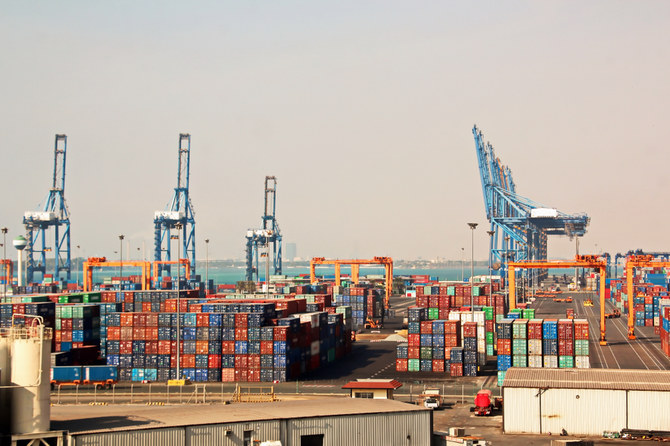
RIYADH: Saudi Arabia’s non-oil exports, including re-exports, saw an annual increase of 3.3 percent in the first quarter of this year, official data showed.
According to the latest report released by the General Authority for Statistics, the value of re-exported goods increased by 31.5 percent during the same period, while national non-oil exports, excluding re-exports, decreased by 5.2 percent.
The value of merchandise exports in March increased by 4.9 percent compared to the previous month.
However, it declined by 5.7 percent in the first three months of 2024 compared to the same period in 2023, primarily due to an 8.3 percent decrease in oil exports.
Chemical products constituted 25.1 percent of the total non-oil exports, recording an 18.3 percent decrease compared to the first quarter of 2023. Plastics, rubber, and their products followed, making up 22.8 percent of total non-oil exports, with a 0.6 percent decrease compared to the same period.
Machinery, electrical equipment, and parts, constituted 22.7 percent of total imports, falling by 5.4 percent compared to the first quarter of 2023. This was followed by transportation equipment and parts, which represented 13 percent of total imports, with a 21.7 percent decrease.
In a separate bulletin, GASTAT highlighted that non-oil exports and re-exports in March rose by 2.9 percent compared to February, and slipped by 0.8 percent compared to March 2023.
While national non-oil exports, excluding re-exports, saw an annual decrease of 6.3 percent in March, the value of re-exported goods increased by 17.6 percent during the same period.
During the first quarter of 2024, the proportion of oil exports out of total value declined from 78.2 percent to 76.1 percent. Imports, on the other hand, increased by 6.4 percent.
In the first quarter, compared to the same period in 2023, both merchandise exports and non-oil exports, including re-exports, decreased by 1.4 percent and 0.2 percent respectively. Meanwhile imports saw a 0.3 percent decline, resulting in a 3.8 percent decrease in the merchandise trade balance surplus.
In March, merchandise exports declined by 5.9 percent, largely driven by a 7.3 percent decrease in oil exports, leading to a drop in the proportion of oil exports from 78.1 percent to 76.9 percent compared to March 2023.
Conversely, imports increased by 1 percent, while the surplus of the merchandise trade balance decreased by 17.2 percent compared to March 2023.
This period also witnessed a slight decrease in the ratio of non-oil exports, including re-exports, to imports, which fell to 34.7 percent from 35.8 percent in the previous year, attributed to a significant increase in imports by 6.4 percent, compared to a 3.3 percent rise in non-oil exports.
In the first three months of this year, China was the main destination for the Kingdom’s exports, accounting for 14.9 percent of the total. South Korea and India followed with 9.8 percent and 9.5 percent, respectively. Exports to these and other top destinations made up 67.1 percent of the total.
Similarly, China was the leading source of the Kingdom’s imports at 20.9 percent, followed by the US at 8.1 percent and the UAE at 6.8 percent. Imports from these and other top sources accounted for 63.4 percent of the total.
King Abdulaziz Sea Port in Dammam was the major entry point for goods into the Kingdom, accounting for 27.4 percent of total imports.
Other key ports included Jeddah Islamic Port with 18.8 percent, King Khalid International Airport in Riyadh with 14.2 percent, King Abdulaziz International Airport in Jeddah with 8.1 percent, and King Fahad International Airport in Dammam with 6.1 percent.
Together, these five ports handled 74.6 percent of the Kingdom’s total merchandise imports.
In March, key non-oil exports include chemical products, comprising 28.1 percent of total non-oil exports, marking a 12.9 percent decrease from March 2023.
In contrast, primary imported goods include machinery, electrical equipment, and parts, constituting 24.1 percent of total imports, rising by 21.4 percent from March 2023.
China also emerged as the Kingdom’s top destination for exports where they comprised 16.4 percent of Saudi Arabia’s total exports.
Similarly, China ranked first for the Kingdom’s imports in March, constituting 21.2 percent of the total imports, followed by the US with 8.7 percent and the UAE with 6.9 percent.
King Abdulaziz Sea Port in Dammam played a vital role as one of the primary ports for goods entering the Kingdom, comprising 28.9 percent of total imports.
Other significant entry points included Jeddah Islamic Port, King Khalid International Airport in Riyadh, King Abdulaziz International Airport, and King Fahad International Airport in Dammam.
Together, these five ports accounted for 76.3 percent of the Kingdom’s total merchandise imports in March.


